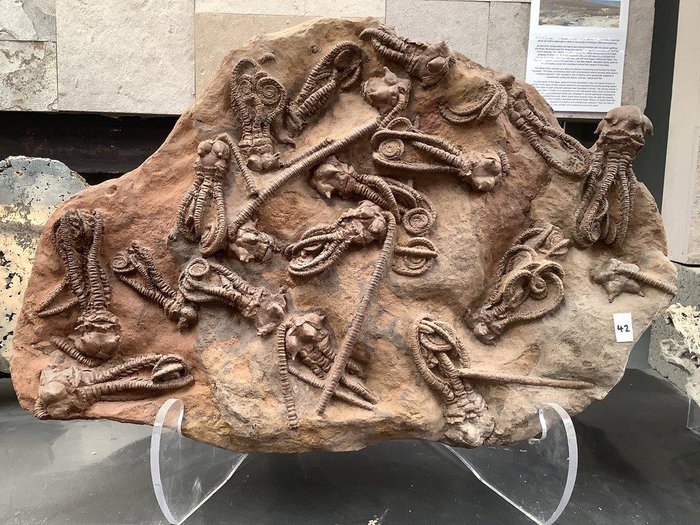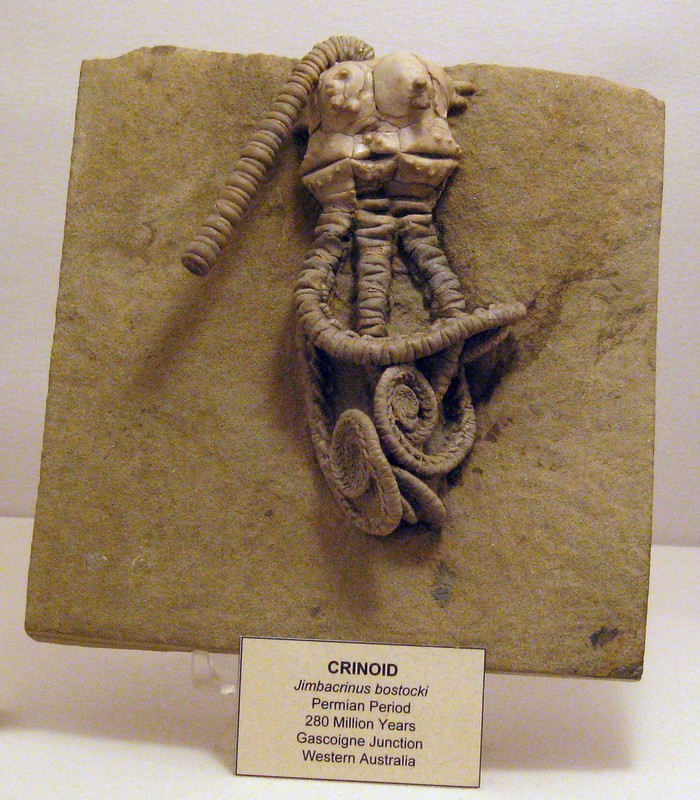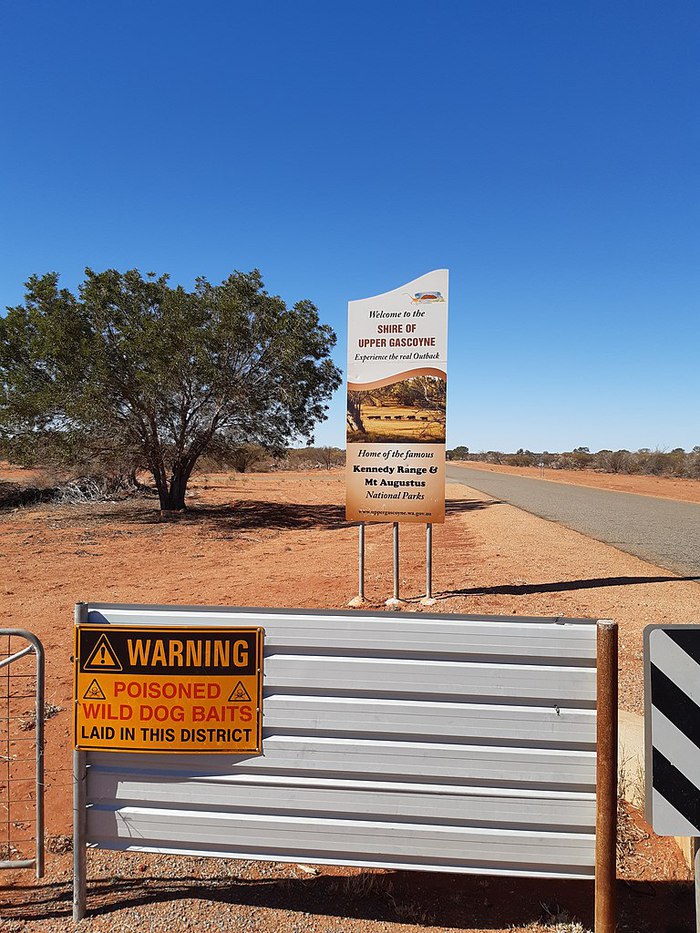280 million-year-old ‘alien’ fossil discovered in Western Australia
This 280-million-year-old fossil has such a strange and confusing shape that many people at first look will think it is definitely an alien fossil.
Fossils of Jimbacrinus suggest they were seabed animals that flourished in what is now Western Australia during the Permian period. They have grown to about 9 inches in length.
In fact, the fossil in question belongs to the species Jimbacrinus crinoids, or sea lilies, and was found in Western Australia. These sea creatures lived about 280 million years ago, during the Permian period, and their fossils provide valuable insights into the evolution and diversity of life on Earth.
The fossils of this species first came to the public’s attention through an image that was widely spread on social networks. The image shows them arranged in a group, suggesting they were buried in the sedimentary rock of their natural habitat. The fossils are thought to have been found near Gascoyne Junction, a remote area in Western Australia known for its geological diversity.
Jimbacrinus has five arms made up of tentacle-like structures. Like all crinoids, it uses its outstretched arms to feed on small animals and particles in the water. The crinoids have a long history. They are the first echinoderms to appear in the fossil record and have retained their original structure throughout their long history. Crinoids were extremely common in the Paleozoic.
When the Midwest Times investigated the source of the image, they discovered that it had been posted on the website of a US-based fossil dealer. The dealer claims that the fossils were obtained legally and can be sold to interested buyers. This raises some questions about the legal status of fossil collection and trade in Australia, where the laws regarding the collection and sale of fossils vary greatly from state to state.
David Gear, representative of the Western Australian Museum, clarified the legal status of fossil collection in Western Australia. According to Gear, it is legal to collect and export fossils under certain circumstances, but collectors must obtain the necessary permits and follow guidelines for responsible fossil collection. Gear also emphasizes the importance of leaving fossils in their natural environment whenever possible, as they provide important scientific data about the history of life on Earth.
Fossils of this alien-looking species were abundant in the shallow seas that covered much of Western Australia during the Permian period – first discovered in 1949 by cattle station manager Jimba Jimba, where this genus is named. J Bostock (who gives the species its name) found fossils of Jimbacrinus crinoids in the Cundlego Formation, a sandstone formation created by the deposition of floods and storms during the Early Permian period around 275 million years ago.
This formation is found along a dry creek bed and contains fossil remains of many species that inhabited the seabed during that era. Interestingly, these fossils are often found complete and have not been discovered in any other location.
The fossil deposit near the Gasocyne Junction provides a glimpse into the extinction events of the Permian Period, at the end of the “Great Destruction”. It was the largest and most severe of the five known mass extinction events during recorded geologic time, which caused more than 90% of all marine species to disappear from the ocean. our planet at that time. Rising global temperatures lead to warmer and more acidic water, increasing concentrations of methane and metals, and severely reducing oxygen levels in the water making it difficult for marine animals to survive. However, a small percentage of crinoids survived the extinction event and to this day there are still more than 600 species of crinoids living on our planet.
Another interesting fact is that fossils of crinoids are the inspiration for the construction of Sentinel’s image in the movie The Matrix. While the Sentinels initially had some limited functions, they eventually evolved into machines that scour the underground metropolis in search of humans and Zion ships.
Fossils of Jimbacrinus crinoids found near Gascoyne Junction are particularly noteworthy because they are among the most complete and intact fossils on our planet, which could allow scientists to study soft tissues and their internal structures in greater detail.
Related Post
Breaking News: Intact Dinosaur Unearthed in the Amazon Jungle—A Groundbreaking Discovery
Stunning Discovery: 6,000-Year-Old Danish Burial Reveals Heart-Wrenching Mother and Baby Bond
Grisly Discovery: Female ‘Vampire’ Remains Found Pinioned with a Sickle Across Her Throat to Repel the Supernatural
Unearthing King Tut’s Footwear: The Hidden Stories of His 3,300-Year-Old Sandals, from Hidden Disabilities to Symbolic Enemies
Revealing the Shocking Secrets of Rome’s 5,500-Year-Old Giant Tomb: What the Ancient Enigma Exposes
Mysterious Find: 3-Fingered Mummified Hand Discovered in a Hidden Tunnel Beneath the Peruvian Desert—What Secrets Lie Within?



